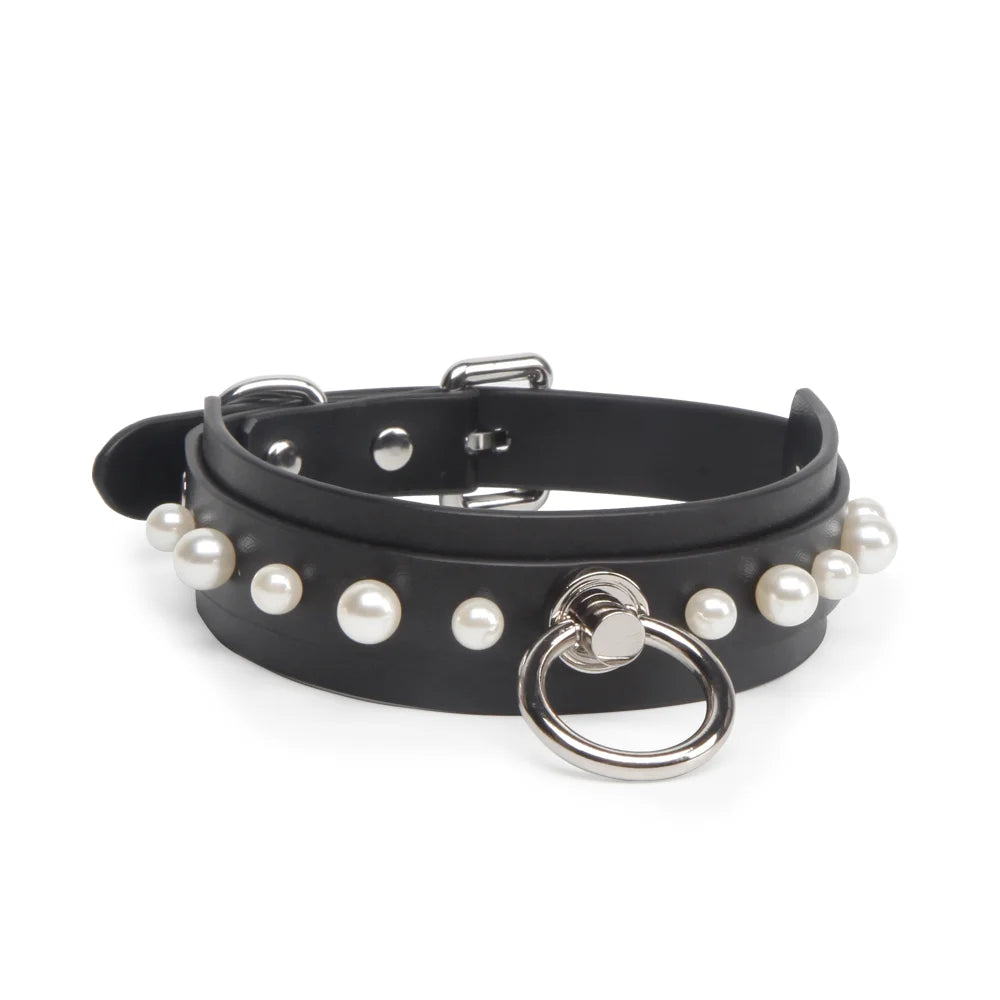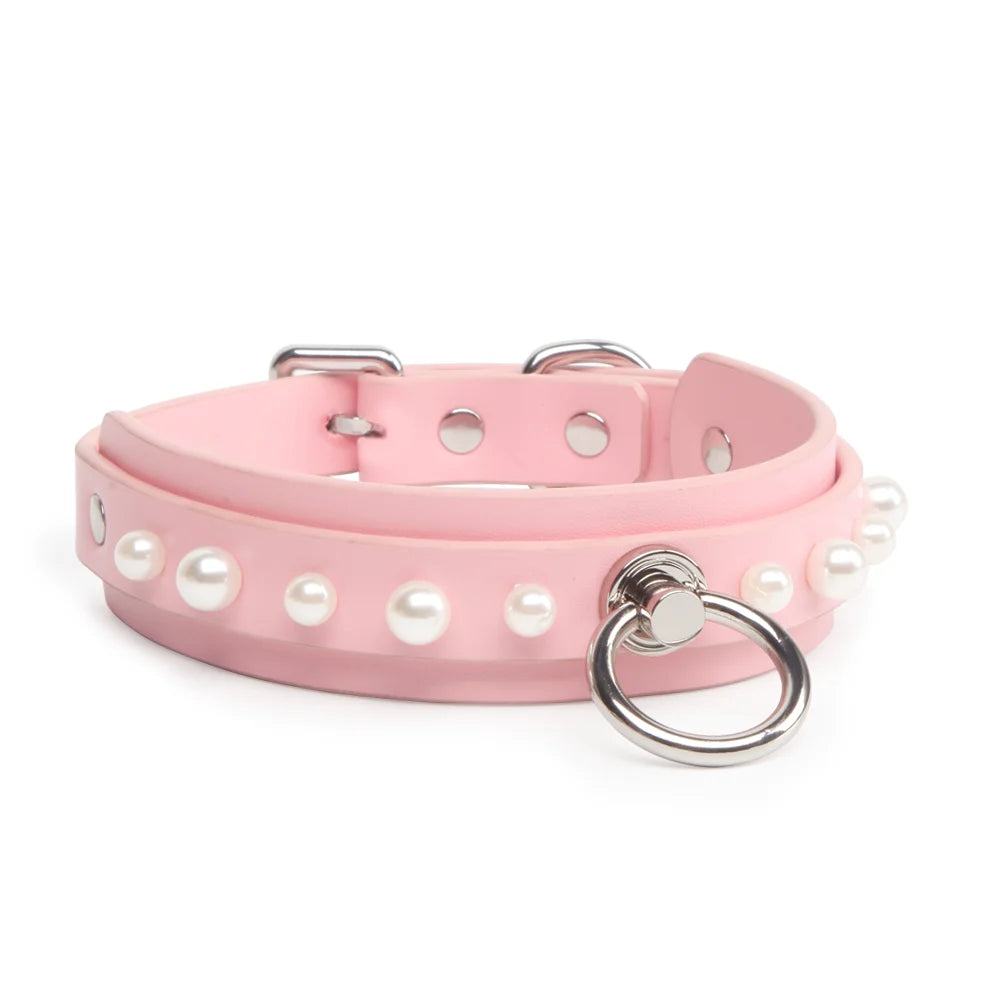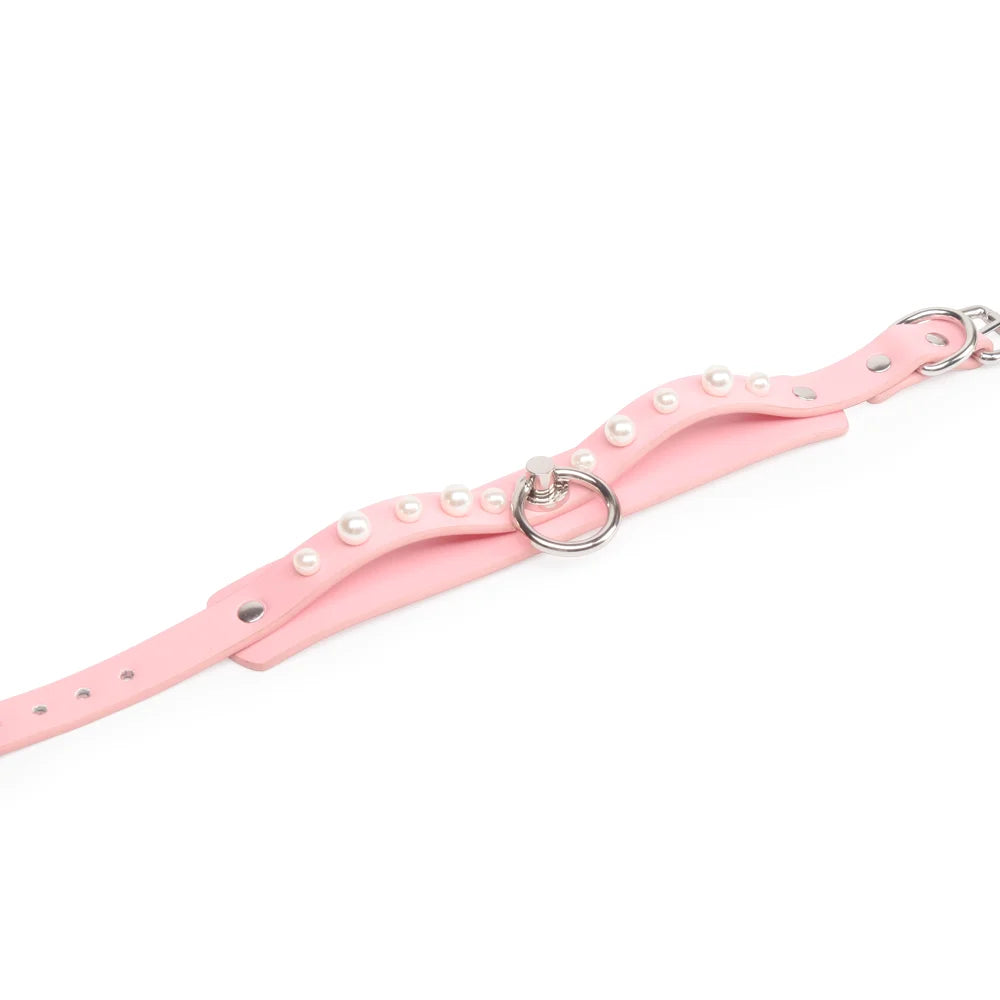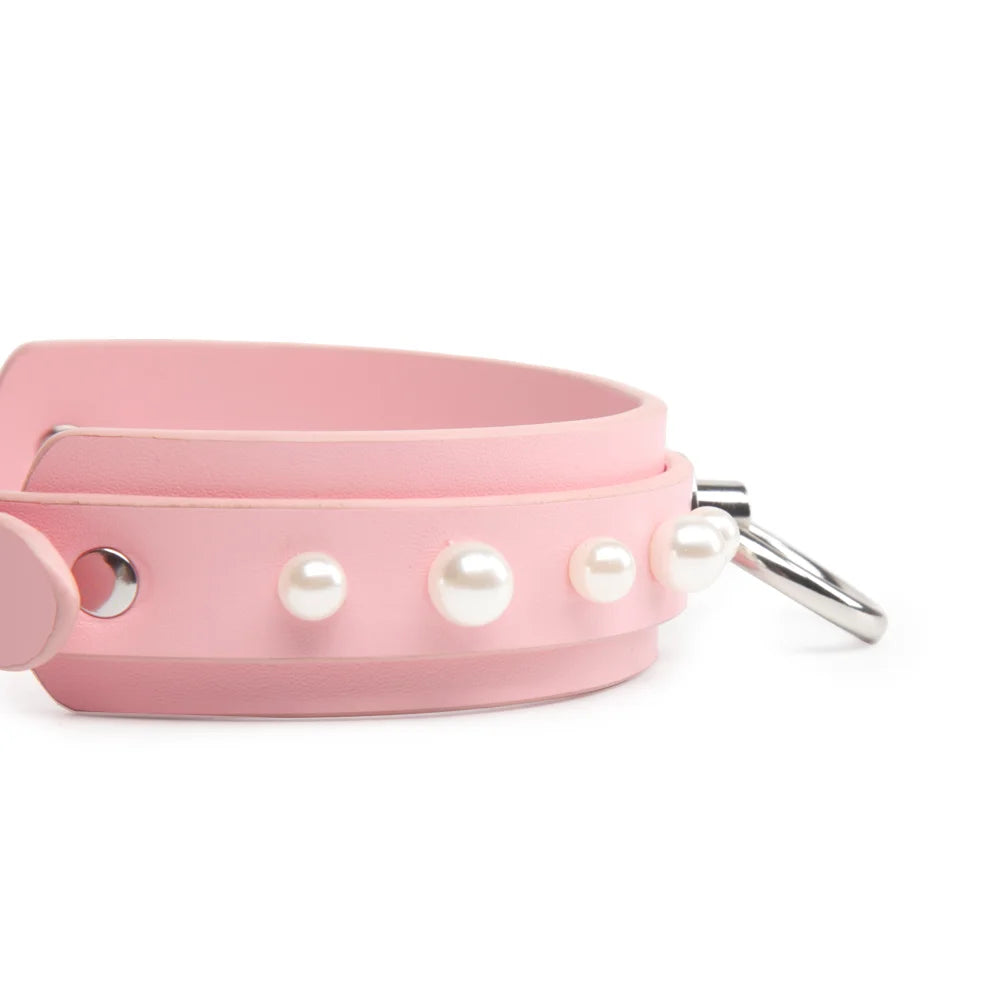Form Meets Function — The Bondage Collar Guide
Neck collar with D-ring for confident fit and easy attachment.
A well-fitted collar anchors leashes and restraints—instant structure for BDSM dynamics. Perfect for fetish rituals, presentation, and ownership themes.
About This Series — Bondage Collars ▼
Bondage collars frame protocol and presence. Fit and edge treatment decide comfort first; hardware placement defines how signaling and attachment read from every angle. You’ll notice how a true center line, proportional width, and consistent padding keep the neck supported while leaving the jaw and breath pathways unobstructed.
Material choices tailor the mood. Full-grain leather develops character and keeps structure tidy; padded interiors soften pressure points and extend wear time; vegan options focus on smooth, uniform surfaces with easy care. D-ring count and position guide leash direction and accessory balance, while low-profile buckles reduce bulk without compromising security.
Finishing communicates quality at a glance: burnished or painted edges, even stitching, and hardware that sits flush against the strap. The silhouette stays elegant—no excess, just deliberate lines that telegraph connection, consent, and role clarity.
Reach for this collection when you want a collar that feels as composed as it looks—stable fit, thoughtful hardware, and a design language that honors both comfort and control.
-
Regular price $19.00Regular priceUnit price per
-
Regular price $19.00Regular priceUnit price per
$29.00Sale price $19.00Sale -
Regular price $49.00Regular priceUnit price per
-
Regular price $79.00Regular priceUnit price per
-
Regular price $79.00Regular priceUnit price per
-
Regular price $89.00Regular priceUnit price per
-
Regular price $89.00Regular priceUnit price per
-
Regular price $79.00Regular priceUnit price per
-
Regular price $29.00Regular priceUnit price per
$49.00Sale price $29.00Sale -
Regular price $79.00Regular priceUnit price per
$99.00Sale price $79.00Sale -
Regular price $99.00Regular priceUnit price per
-
Regular price $69.00Regular priceUnit price per
$97.00Sale price $69.00Sale -
Regular price $69.00Regular priceUnit price per
$94.00Sale price $69.00Sale -
Regular price $79.00Regular priceUnit price per
$109.00Sale price $79.00Sale -
Regular price $69.00Regular priceUnit price per
$94.00Sale price $69.00Sale -
Regular price $39.00Regular priceUnit price per
-
Regular price $49.00Regular priceUnit price per
-
Regular price $39.00Regular priceUnit price per
-
Regular price $79.00Regular priceUnit price per
-
Regular price $59.00Regular priceUnit price per
-
Regular price $89.00Regular priceUnit price per
-
Regular price $79.00Regular priceUnit price per
-
Regular price $79.00Regular priceUnit price per
$97.00Sale price $79.00Sale -
Regular price $69.00Regular priceUnit price per
$99.00Sale price $69.00Sale -
Regular price $89.00Regular priceUnit price per
$113.00Sale price $89.00Sale -
Regular price $49.00Regular priceUnit price per
-
Regular price $89.00Regular priceUnit price per
-
Regular price $49.00Regular priceUnit price per
-
Regular price $69.00Regular priceUnit price per
-
Regular price $59.00Regular priceUnit price per
-
Regular price $69.00Regular priceUnit price per
-
Regular price $99.00Regular priceUnit price per
-
Regular price $69.00Regular priceUnit price per
-
Regular price $79.00Regular priceUnit price per
$93.00Sale price $79.00Sale -
Regular price $89.00Regular priceUnit price per
-
Regular price $69.00Regular priceUnit price per
Spotlight Design — Balanced D-Ring and Clean Hardware
SEX PADDLE
Pearl Leather BDSM Collar with Leash






Free Discreet Shipping on Orders Over $49 or 2+ Items
Build a Set — Leashes, Locks, and Scene Aesthetics
Special Prices — Starter Collars and Premium Picks
Collapsible content
How to Fit a Collar — Measure, Adjust, and Test Range
Measure for comfort, not just aesthetics.
A collar should fit snugly without restricting breathing or swallowing. Measure at the base of the neck, then add a finger’s width of space. Padded leather or soft-lined materials distribute pressure evenly and reduce chafing during extended wear.
Layer consent and communication.
Discuss intent—symbolic, decorative, or functional—before use. For play collars, establish verbal and non-verbal signals, especially if leash pulling or posture training is involved. Check in regularly; discomfort can build quietly under tension or emotion.
Match material to purpose.
Leather offers structure and durability; neoprene or microfiber feels lighter and flexible; metal looks bold but demands temperature and weight awareness. Quick-release or buckle styles affect both aesthetics and emergency access—choose accordingly.
Care for longevity and skin safety.
Wipe after each use with a damp cloth, then dry completely. Condition leather lightly; wash synthetic or fabric collars with gentle detergent. Store flat or hung to maintain shape and prevent odor. Inspect D-rings and stitching often—safety hardware should never be loose.
FAQs — Skin Care, Edges, and Long-Wear Tips
Q1. What counts as a bondage collar in this collection?
Bondage collars include day collars, play collars, posture collars, and designs with D-rings/O-rings, leashes, or locking buckles. Materials range from leather and silicone to stainless steel.
Q2. Day collar vs play collar—what’s the difference?
Day collars are low-profile, jewelry-leaning, meant for discreet wear; play collars prioritize hardware and control points with wider straps and multiple rings.
Q3. What is a posture collar and who chooses it?
A posture collar is taller and stiffer, limiting chin drop and head rotation to encourage alignment—chosen for training aesthetics and scene discipline.
Q4. Sizing & fit—how should a collar sit?
Measure at the base of the neck; a correct fit allows the two-finger rule under the band. Too tight risks airway/nerve compression; too loose rotates unpredictably.
Q5. Common hardware & use cases (D-ring, O-ring, leash)
D-rings/O-rings provide attachment points for leashes or light tethers. They’re for positional cues, not load-bearing or suspension.
Q6. Materials—how do leather, silicone, and steel differ?
Leather = classic look, molds to you over time; silicone = hygienic, easy to clean; stainless = sleek, cool touch, often lockable.
Q7. Are bondage collars beginner-friendly?
Yes—start with medium width, smooth edges, and a quick-release option. Learn signals and practice short sessions first.
Q8. Safety basics specific to collars
Avoid pressure on the front of the neck and carotid area; never use for suspension; set non-verbal safes and check skin/comfort regularly.



















































